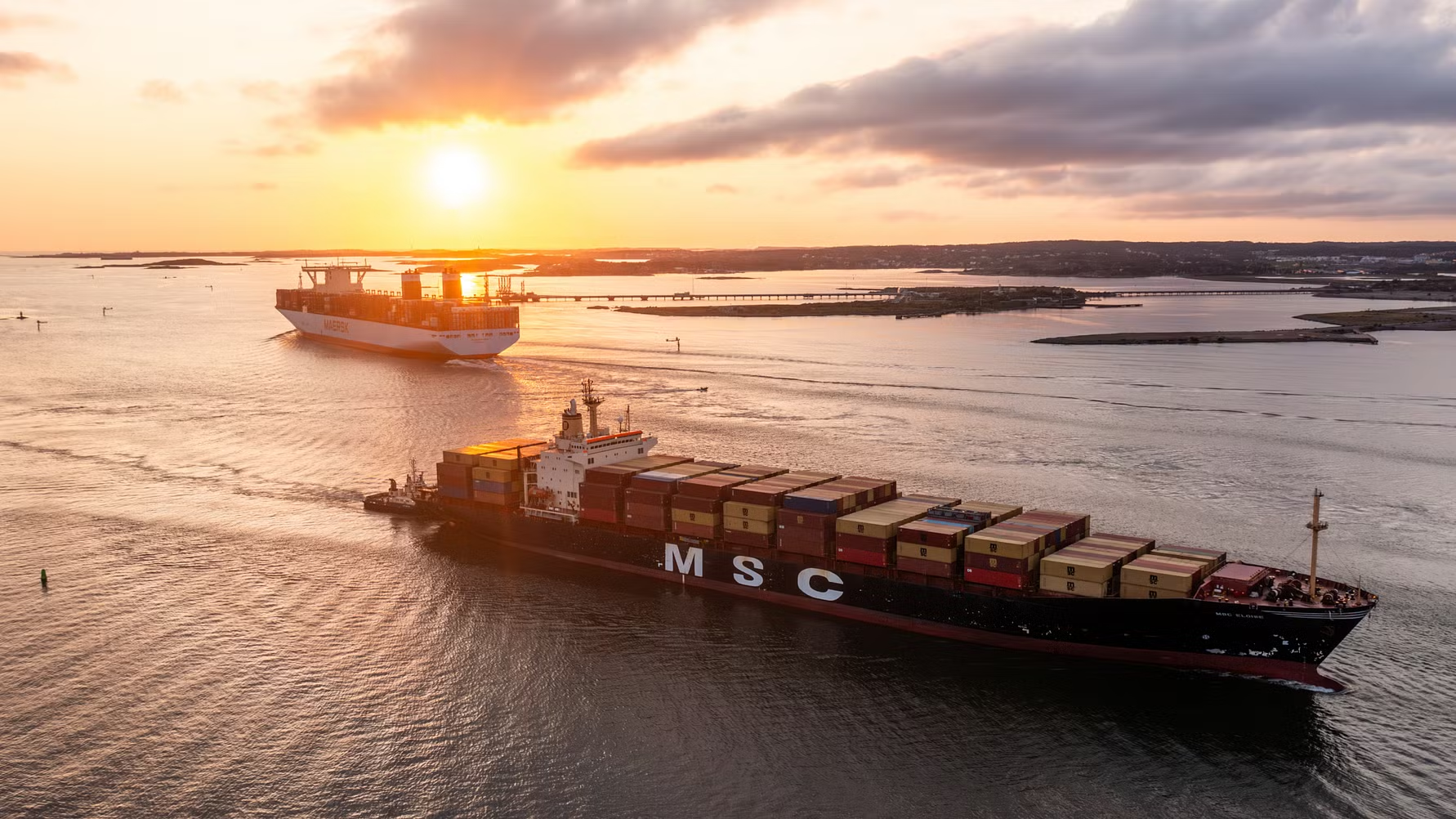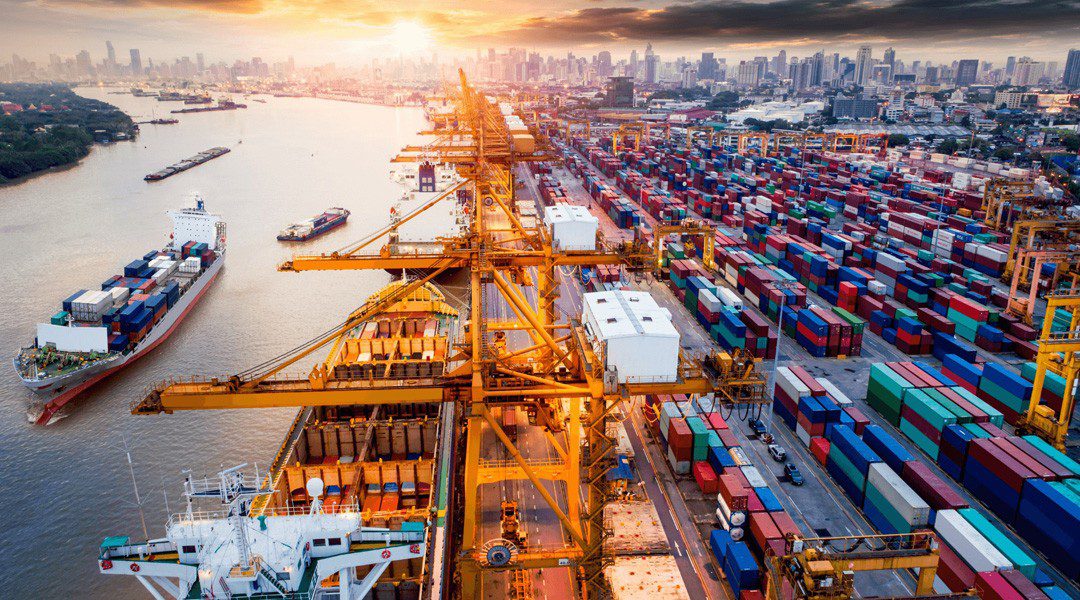 Container vessels entering and exiting the Port of Gothenburg. Photo: Gothenburg Port Authority
Container vessels entering and exiting the Port of Gothenburg. Photo: Gothenburg Port Authority
Container volumes at the Port of Gothenburg continue to increase from last year’s record levels. During the first quarter of 2024, more containers were handled in the Port than ever before in a single quarter, as evident in the port’s recently compiled quarterly figures.
Last year, the high export volumes contributed to 2023 being the best year ever for the Port of Gothenburg in terms of container handling. On the import side, it was more challenging, with a decrease of nearly 20% for the entire year. The low import figures were explained by high-interest rates and a weakened Swedish krona as key contributing factors reducing Swedish consumer demand.
But now the trend has reversed. During the first quarter of this year, the import of container goods increased by 11% compared to the same period in 2023.
“Now we are back to import volumes at levels similar to those before the pandemic. And the signals we are receiving from the market indicate that major importers in sectors such as retail expect strengthened purchasing power and increased demand from Swedish consumers going forward,” says Claes Sundmark, Vice President of Sales & Marketing at the Gothenburg Port Authority.
Both imports and exports increased – resulting in the best quarter ever
While imports are growing, exports continue on the trajectory from 2023 with continued increased volumes. During the first quarter of 2024, the number of exported containers increased by 4% compared to the same period last year.
In total, combining exports and imports, the port’s container volumes increased by 8% to a total of 242,000 handled containers (TEU*), which is the highest figure for a single quarter in the port’s history. The Port of Gothenburg handles 57% of Sweden’s total container volume, with terminal operator APM Terminals handling most of the volumes.
More containers by rail
During the first quarter, the amount of container goods transported by rail increased by 1% to 126,000 TEU. The growth includes forest products transported by rail and containerised in Gothenburg. Railway routes to import-heavy destinations in the Swedish hinterland also showed strong growth.
“A lot is happening right now that will further strengthen our railway offering in the future. We have new railway destinations starting up, while several existing routes are increasing in frequency. The upgrade of the Port Line to double track has just been completed, tripling the capacity of the railway. With the Port Line and our recently started fairway deepening, we are developing the port with even more robust and efficient infrastructure, sharpening the competitiveness of Swedish industry further,” says Claes Sundmark.
Growing energy volumes
During the first quarter, the handling of energy products through the port increased by 10% to 5.1 million handled tons. This is compared to the same quarter in 2023, where volumes were relatively low due to planned maintenance shutdowns at refineries.
Slightly fewer vehicles and ro-ro units
The handling of new vehicles decreased by 2% to 69,000 cars during the first quarter. It was primarily the import of cars to Sweden that decreased, reflecting the decrease in the number of new car registrations in Sweden during the period.
During the first quarter, the intra-European ro-ro volume decreased by 2%. Ro-ro stands for roll on/roll off and refers to trailers and other rolling cargo transported on high-frequency shipping services. Like the port’s container volumes, there is also some recovery in import volumes in the ro-ro segment.
More dry bulk cargo
The handling of conventional dry bulk vessels continues to increase. During the first quarter, 144,000 tons of dry bulk were handled, an increase of 30%. Behind the increase are, among other things, new export flows of forest products, granules, and building materials for major infrastructure projects.
More passengers
The number of passengers increased by 11% to 258,000. This is the highest number of passengers since 2018 for the corresponding period. In March, the port also welcomed the first cruise call of the year.





